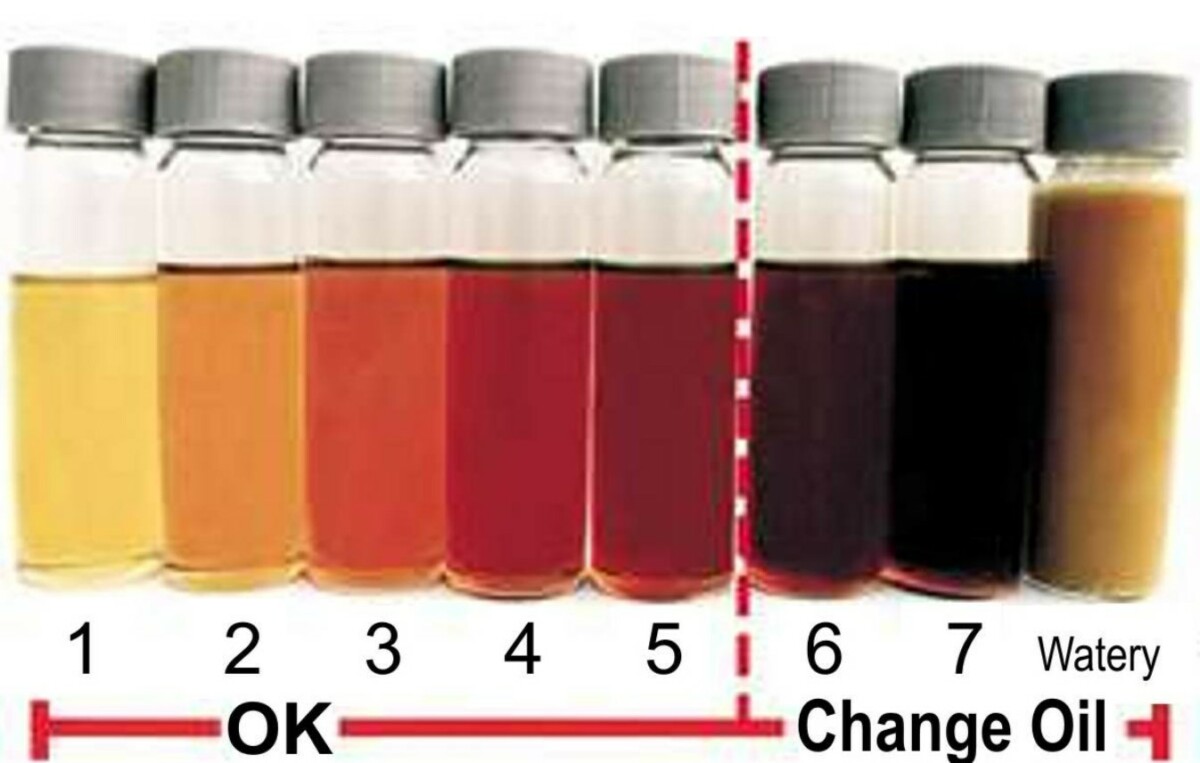Have you ever wondered what color your engine oil should be? If you think it’s always black, you might be in for a surprise.
Engine oil should be Amber in color, and is the lifeblood of your car.
It lubricates, cools, cleans, and protects your engine from wear and tear.
However, not all engine oil is similarly manufactured. Depending on the type, age, and quality of your oil, it can have different colors and consistencies.
When it pertains to car maintenance, it’s essential to regularly inspect your oil and adhere to the oil change intervals recommended by the manufacturer.
In this article, we’ll explain how the color of your engine oil can reveal a lot about your car’s health, performance, and maintenance needs.

Credit: carbuyerlabs
What Does Engine Oil Color Say About Your Car’s Health?
You can learn a lot about your engine’s condition by looking at the amount, texture, and color of your motor oil.
This can help you detect possible problems like oil pollution and leaks in your engine!
The color of engine oil can change over time due to factors like aging, degradation of additives, presence of contaminants, and exposure to heat.
Additionally, some colors of motor oil may indicate trouble, nonetheless, you shouldn’t rely on color alone to decide when to change your oil or to diagnose your car.
While certain variations in oil color might indicate potential problems, you shouldn’t rely on color alone to decide when to change your oil or to diagnose your car.
Instead, you should follow the advice of most car manufacturer’s and use your driving habits, mileage, and owner’s manual to determine when to get your next oil change.
How To Inspect Your Engine Oil Color and Clarity
Checking your oil color is a quick process that also enables you to gauge oil levels simultaneously. To check your engine oil :
- Park your car on a flat surface and let the engine cool for 10 to 15 minutes.
- You’ll only need gloves if you prefer to keep your hands clean, and a rag or paper towel.
- With the engine off and slightly cooled, open the hood and locate the oil dipstick, usually identified by a plastic orange or red pull-tab. If you’re unsure which one it is or find multiple dipsticks, refer to your vehicle’s owner’s manual for guidance.
- Remove the dipstick, wipe it clean with a paper towel or rag, then reinsert it fully into its tube.
- Wait a moment, then pull it out again and observe the engine oil level, color, and consistency.
- Once you’ve assessed the oil color, wipe the dipstick one final time and ensure it’s fully inserted back into place.
What Color Should Engine Oil Be?
Usually, fresh engine oil is a somewhat clear honey color that has the texture of olive oil.
When new oil is put in your engine, it flows through the engine block, making its parts move smoothly, balancing heat, cleaning the engine, and preventing rust and corrosion from building up!
Over time, the oil usually darkens and thickens, diminishing its effectiveness in performing its essential functions.
Oil that fails to perform optimally may compromise the engine’s health, resulting in increased wear and oil consumption.
These issues can manifest in concerning symptoms such as blue or gray exhaust smoke, decreased fuel efficiency, and idling vibrations.